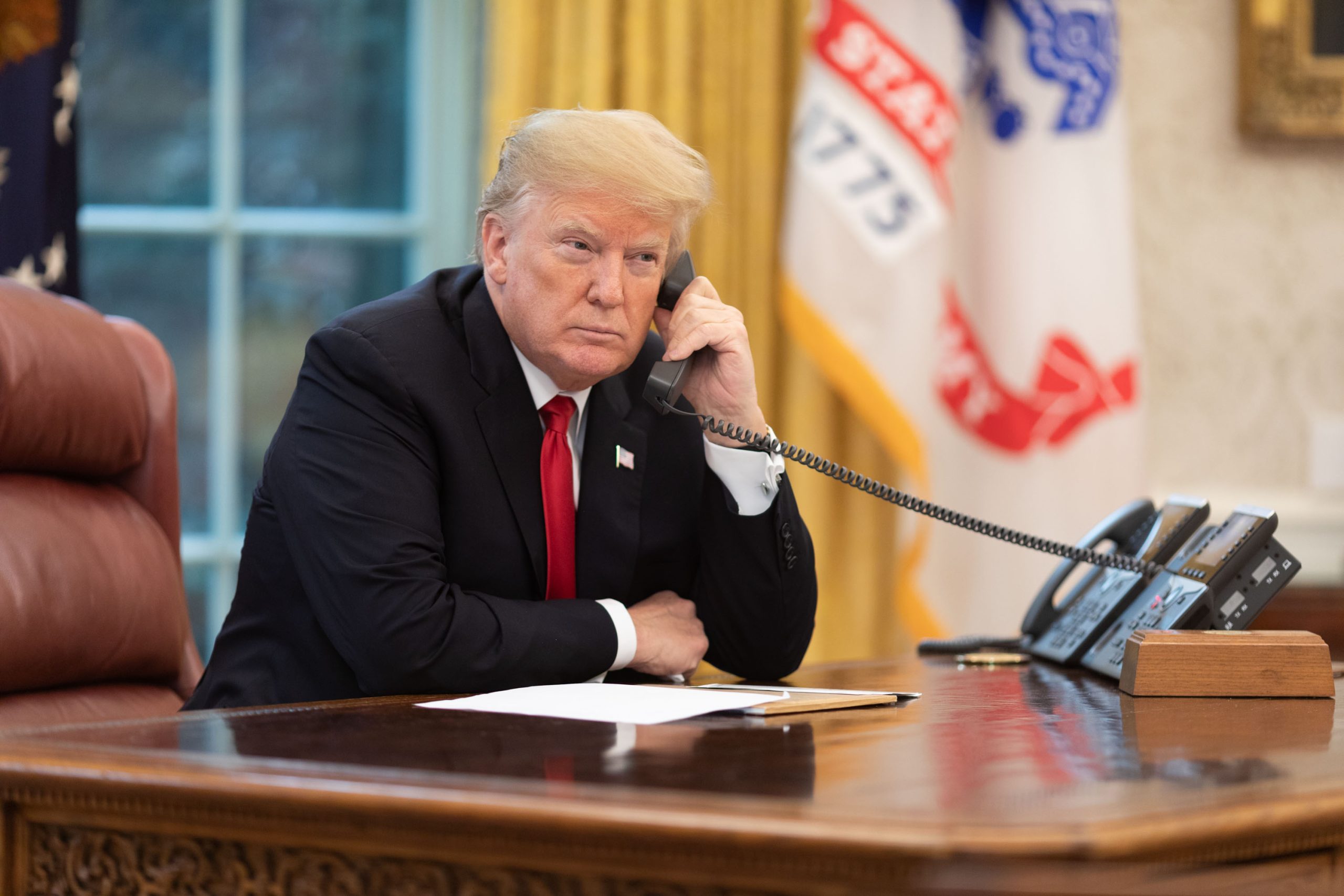The U.S. government has taken a substantial stake in semiconductor company Intel, but the deal raises concerning questions for investors.
President Trump in early August called for Intel (INTC -0.81%) CEO Lip-Bu Tan to resign because of ties with the Chinese Communist Party. But he has since changed his tune, so much so that the U.S. government recently took a 9.9% stake in the struggling semiconductor company, buying 433.3 million shares at $20.47 per share.
Intel stock advanced more than 5% when the deal was announced on Friday, Aug. 22. But President Trump days earlier struck an equally unusual revenue-sharing deal with Nvidia, and several pundits and politicians are concerned by his decision to further blur the line between the public and private sectors.
Here’s what investors should know.
Image source: Official Whte House Photo by Joyce N. Boghosian.
Intel’s dominance in the CPU market faded during the last decade amid persistent manufacturing problems
Intel has lost substantial market share in central processing units (CPUs) in recent years because of a combination of execution missteps and competitors releasing better products. Most notably, serious problems with its 10-nanometer process technology lead to repeated delays between 2015 and 2020, allowing rival foundry Taiwan Semiconductor to become the most advanced chip manufacturer.
Intel accounted for virtually all data center server CPU shipments in 2016, but its market share in that category has since declined to 63% as Advanced Micro Devices and Arm Holdings have gained ground. Likewise, Intel accounted for roughly 90% of personal computer CPU shipments in 2016, but its market share in that category has since fallen to 66% as the same competitors have stolen customers.
Consequently, Intel’s non-GAAP earnings have fallen from $2.72 per diluted share in 2016 to negative $4.77 per diluted share over the last 12 months. Meanwhile, the stock is down 30% since January 2017. Worse yet, Bank of America analysts expect the company to keep losing share in coming years as companies rely more heavily on alternative CPUs, especially custom chips built on Arm architecture.
The U.S. government’s taking a stake in Intel is a vote of confidence for the struggling chipmaker
Intel in 2021 announced plans to become a major provider of external foundry services (contract chipmaking) in the United States and Europe. Initially, that comprised a $20 billion investment to build two semiconductor fabrication facilities in Arizona, but was later expanded to include an additional $20 billion investment in plants in Ohio.
Intel last year repeated its “goal of becoming the world’s second-largest foundry by 2030,” but it has struggled to execute. Chip production in Ohio was initially slated to begin in 2025, but the company is now at least five years behind schedule after repeated delays. Nevertheless, Intel remains the largest American semiconductor manufacturer and the only domestic company that both designs and makes leading-edge logic chips.
Against that backdrop, the U.S. government’s decision to take a 9.9% stake in Intel seems sensible. It provides much-needed cash — Intel burned $11 billion in the last year and has only $21 billion on its balance sheet — and credibility that could help the company establish itself as a key chip manufacturer in the artificial intelligence era. Importantly, that outcome aligns with Trump’s push to revitalize American manufacturing, something he sees as critical to national security.
Intel CEO Lip-Bu Tan said, “President Trump’s focus on U.S. chip manufacturing is driving historic investments in a vital industry to the country’s economic and national security.” Similarly, U.S. Commerce Secretary Howard Lutnick commented, “As more companies look to invest in America, this administration remains committed to reinforcing our country’s dominance in artificial intelligence while strengthening our national security.”
The U.S. government’s taking a stake in Intel raises concerning questions for investors
Intel certainly appears more credible with the U.S. government as a significant shareholder, but some analysts remain skeptical about its plans to become a leading foundry. John Vinh at KeyBanc says Intel has such an abysmal track record that customers are unlikely to trust the company with important projects. “Intel is not going to pick up any sort of meaningful business,” he told Yahoo! Finance.
Also, several politicians have criticized President Trump’s decision to take a stake in Intel. Sen. Rand Paul (R-Ky.) wrote, “If socialism is government owning the means of production, wouldn’t the government owning part of Intel be a step toward socialism?” And former presidential candidate Nikki Haley said, “This will only lead to more government subsidies and less productivity. Intel will become a test case of what not to do.”
Similarly, Rep. Thomas Massie (R-Ky.) told Fox Business, “Conflicts of interest arise when the government gets in bed with private companies: Intel is now more likely to cooperate with government intrusion into private computing, and government regulatory agencies are more likely to play favorites with Intel.”
President Trump is willing to make similar deals with other companies, but the Intel deal alone raises some worrisome questions. Will the U.S. government push American companies like Nvidia and AMD to rely solely on Intel for foundry services? Is Intel now subject to the whims of whichever political party is in power? Would the government retaliate if Intel made business decisions it deems unwise?
Here is the bottom line: The Trump administration has created a conflict of interest where the government has a clear incentive to act in a manner that benefits Intel. Any future deals would only create more conflicts of interest. So investors should pay very close attention as this unprecedented situation unfolds.
Bank of America is an advertising partner of Motley Fool Money. Trevor Jennewine has positions in Nvidia. The Motley Fool has positions in and recommends Advanced Micro Devices, Intel, Nvidia, and Taiwan Semiconductor Manufacturing. The Motley Fool recommends the following options: short August 2025 $24 calls on Intel. The Motley Fool has a disclosure policy.






